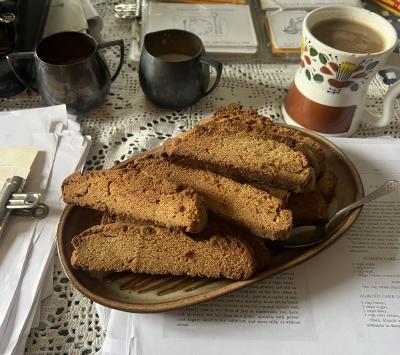The Erie Cook Book Revisited: What The Rusk?
This early American shortbread is an economic staple for your tea table and beyond.
In the late 1800s, the rusk was a testament to the economy of a well-stocked pantry — a way to extend the life of bread, making every last crumb count. Anyone who has been following along with me from the beginning knows how important a crumb stock is! As we approach a time where we are all making our groceries stretch, consider adding rusks into your baking rotation. Rusks are old-fashioned and certainly frugal — this is the kind of recipe that makes you wonder why we ever stopped making it. The Erie Cook Book of 1881 featured a straightforward rusk recipe, meant to be softened with milk or tea, embodying the no-waste philosophy that defined home cooking of the era. Revisiting rusks offers a bridge between Erie's food heritage and the rustic comforts of early American baking.
Ingredients:
3 eggs
½ cup of oil
½ cup of granulated sugar
4 tablespoons melted butter
1 package rapid rising yeast
3 ½ cups all purpose flour
Mix together all of the ingredients and set aside for 30-60 minutes covered and in a warm spot.
Preheat the oven to 350. Remove the dough from the bowl and form into a high, oval shaped log on a sheet pan lined with parchment paper. Bake for 25-30 minutes and then remove from the heat and cool for 10 minutes. Lower the oven heat to 300 degrees. Slice the log into ½ inch slices. Lay flat on the sheet pan and return to the oven for 30 minutes until browned and toasted.
These are best served with tea, coffee, or warm milk and honey.
Revised from Laura Sterrett's recipe for "Rusks" from page 92 in the 1881 Erie Cook Book


.png)
